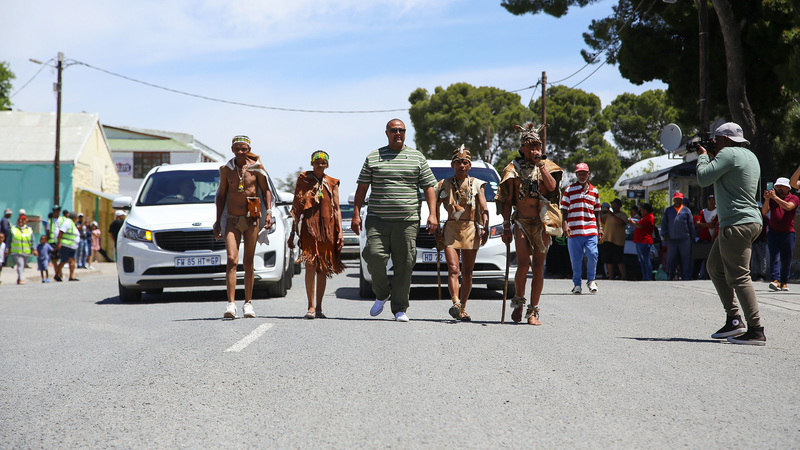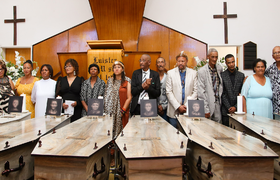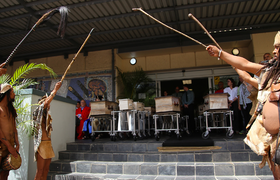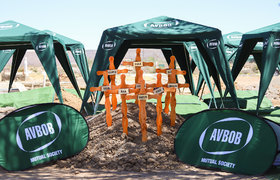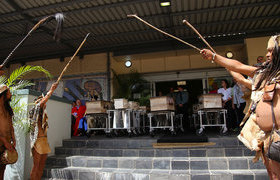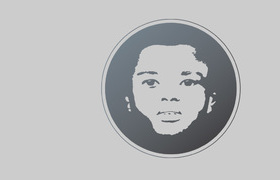‘The spirits are rejoicing. They are home again’
01 December 2023 | Story Helen Swingler. Photos Je’nine May. Videography Ruairi Abrahams and Boikhutso Ntsoko. Video Edit Boikhutso Ntsoko. VP Team Roxanne Harris, Ruairi Abrahams, Boikhutso Ntsoko and Rozanne Engel. Read time >10 min.The Roggeveld is a high plateau in the Northern Cape Karoo region, the name derived from the wild rye once abundant in the region. It’s an ancient, forbidding landscape that was once home to the Khoi and San.
On Saturday, 25 November, their successors walked there again, chiefs Bradley van Sitters and Autshumao Mackie, and Oupa Isak Kruiper and Atta Lydia Kruiper, elders of the Western and Northern Cape Khoi and San clans, leading a funeral cortège on its slow drive down Sutherland’s main road.
The procession has arrived from Cape Town, where it left the University of Cape Town (UCT) following a memorial ceremony the day before. The caskets carry the sacred remains of the nine Khoi and San people, the Sutherland Nine. The weekend’s burial programme caps an ambitious and complex five-year project to bring them home.
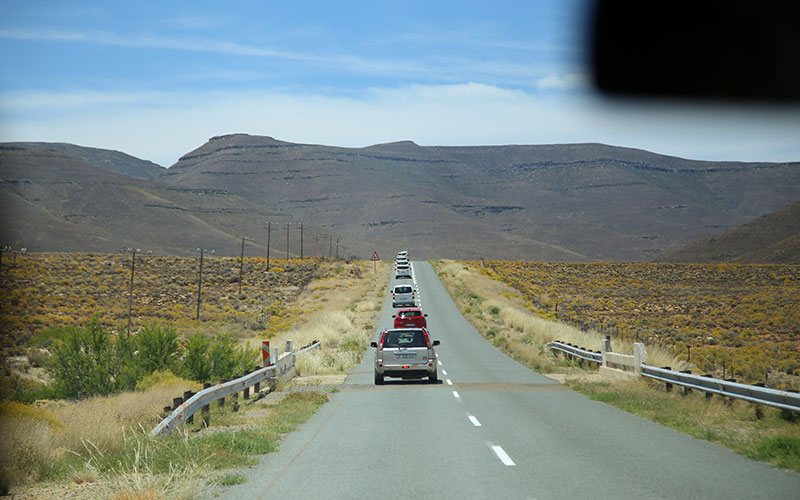
These remains were donated to UCT between 1926 and 1931 by a UCT medical student Carel Gert Coetzee, who lived on the Kruisrivier Farm, where eight of the nine were buried.
Their discovery during a 2017 audit by Professor Victoria Gibbon, curator of the UCT Human Skeletal Repository, set in motion a milestone process of identification and repatriation that stands as a national and international case study.
Belonging and hope
The hearses reach Sutherland’s historic Bus Stop, a dusty circlet of land that once marked the racial border dividing the community. Hundreds gather to welcome the elders – and the ancestors they have brought home. It’s a big day for the town. The community has carried this process with them for five years.
Karoo Hoogland mayor, Anthony Stuurman Mietas, who is also a family member involved in this repatriation, addresses the crowd. It’s a rousing message of belonging, hope and a lesson in neighbourliness that knits communities together.
Behind the gathering, two elderly men stand under a baking sun, narrow-brimmed straw trilby hats screening their faces. They have brought their grandsons to witness this arrival. They must learn, says one, in Afrikaans. They must know where they come from and understand who they are.
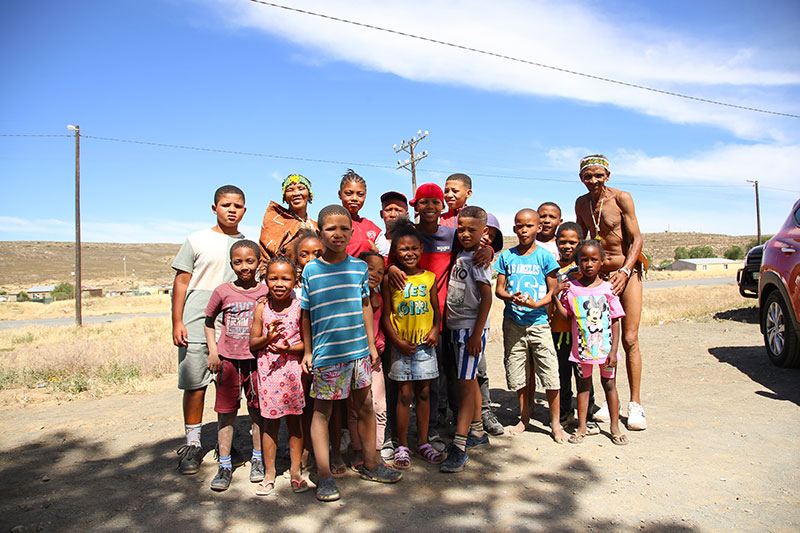
A group of boys on the edge of the gathering is more reticent, arms folded, hands in pockets, unsure what it all means. But one steps forward to proclaim his truth. He knows about the Sutherland Nine. Their remains have been brought back to Sutherland. These are ancestors.
Identity and recognition
As the gathering breaks up ahead of Sunday’s formal funeral in the Verenigende Gereformeerde Kerk, and reburial in the historic Anglo–Boer cemetery, the elders turn to greet the local people.
A mother nudges her small daughter forward. Come see. Look. Here are your people, she seems to say. The little girl is dressed for a celebration, her pink tutu-like, net skirt resisting the heat, her hair in tight, neat bunches.
But in that moment her curiosity turns to fright.
Face to face with the four, clad in their traditional springbok skins, porcupine quills and tortoise shell, beaded headband and wrist bands of hide, anklets strung with seed pods and ostrich eggshell, their strangeness frightens her. She ducks quickly behind her mother – until curiosity compels her to look again.
Does she recognise them as her own people? Or know that her identity and belonging are bound up in the Khoi and San?

“The ways and culture have been lost to many,” says mayor Stuurman Mietas in an interview afterwards. “But to others, it’s alive.”
And it must be revived to anchor this community, where drug and alcohol abuse blot the lives of the young and old. They have forgotten who they are, says Stuurman Mietas. They have lost the stories passed through generations, the ways of the veld, and the songs of those who spoke the clicking language.
The price is paid
It’s a theme Councillor Gillian Pieters, the speaker of the Namakwa District, raises in church the following morning, when praise and song seem to shake its foundations. Pieters talks about the importance of atonement.
In returning the ancestors to the Roggeveld, UCT had recognised its complicity and “paid the price” for the injustice, she notes. Just as David had in the Bible when he bought the threshing floor that belonged to Araunah the Jebusite for the construction of the temple God had instructed be build. As part of his atonement for previous indiscretions, David refused to accept it as a gift from Araunah.
“He paid the price.”
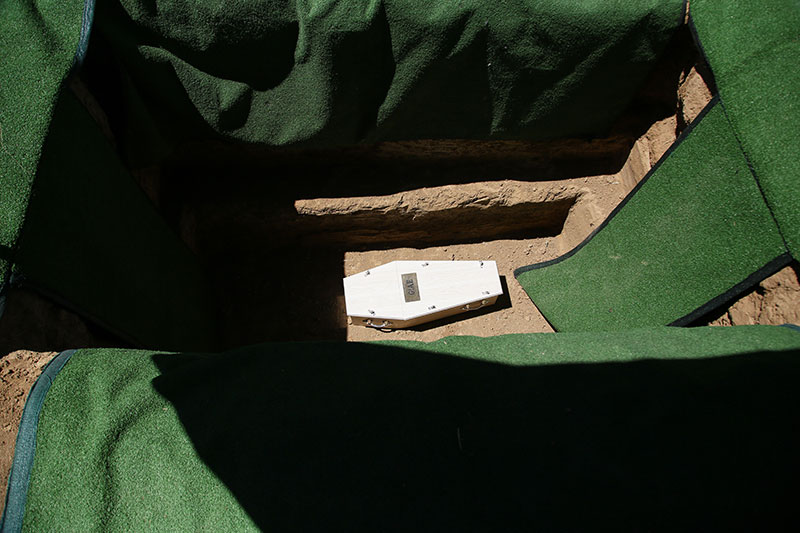
“[And] The price has been paid to give back our identity … Come, let us accept our identity.”
After the service, the Abraham and Stuurman family representatives carry the caskets back to the hearses for their last journey to the burial ground. Among them are two that are small, too small. It’s painful to see. Within lie the wrapped remains of the children, Saa and G!ae.
How might they have seen their short lives? What did they dream under the arc of a night sky heavy with stars? The scientific evidence showed that they suffered, Saa from physical stress caused by malnutrition.
Naming the unnamed
But Saa was not her given name. When the late professor of anatomy at UCT MR Drennan took delivery of the remains in the 1920s, he noted how little Coetzee knew about the people and their lives.
Most adults were identified by first names: Cornelius, Klaas, Saartje, Jannetje, Voetje, Totje. For two, surnames were also specified – Cornelius Abraham and Klaas Stuurman. But because not all the names were known, the descendent families worked with the National San Council to rename the unnamed individuals.
The boy was named G!ae, from the N/uu language, which translates to “springbok”. The animal symbolises the San’s pride in their culture and future prosperity. The girl was named Saa, meaning “eland”, a sacred and spiritual animal in San culture.
The ninth individual was named l gui, meaning “blessing”, to symbolise acceptance and blessing by San ancestors for his reburial.
Spirits rejoice
At the burial ground, the graves have been prepared. After brief addresses from officials and family members and a prayer by Reverend Stephen Pedro, the mourners lift their voices in song.
As the coffins are lowered, one by one, a sudden, fierce dust devil sweeps across the cemetery, upturning gazebos and scattering plastic water bottles put out for the mourners, a hot whirlwind of dust, leaves and debris.
“The spirits are rejoicing,” says a family member, looking upward. “They are back home.”
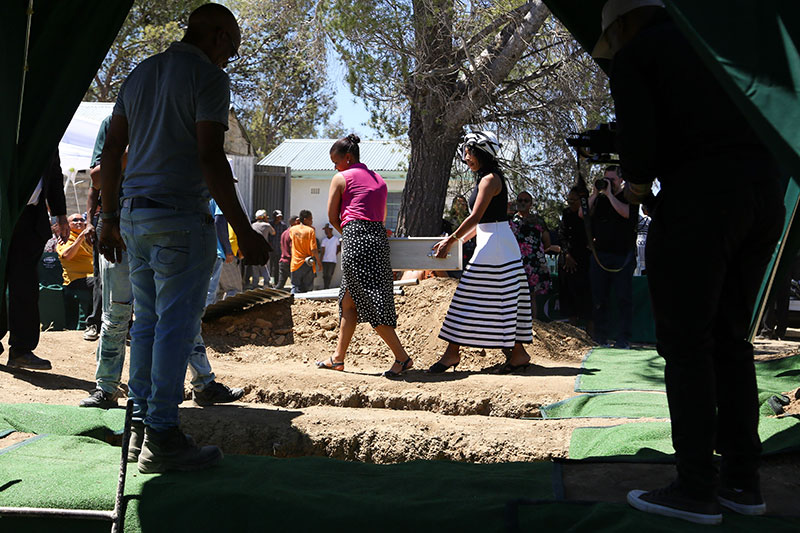
Afterwards, Professor Gibbon remains for a brief interview with UCT’s videography team. She is visibly relieved, but also moved.
She remembers Alfred Stuurman, a Stuurman family representative who was there at the beginning of the process, the tall man with the crinkly face who bore the inherent, quiet dignity of a leader. He should have been here today.
“This is like closure. Personally, I’m very relieved that this moment happened. It has felt like several times we’ve been close to today. And yet, it seemed so far away. Even on Friday [at UCT’s Faculty of Health Sciences], I was not convinced. And today, we are here, and I feel really glad that after all this time, they [the Sutherland Nine] are here – and they can rest.”

She is also thankful to have been part of this journey, to have met all these people.
“I feel so honoured to have been part of this. I can’t comprehend how many people have been connected through this. And it also doesn’t feel like it’s over. We’re already talking about how we can bring education and history into the community around San and Khoi history from this area. There’s a great opportunity to build up that knowledge.
She adds, “[The process has shown that] it is possible to give closure to communities. As a scientist, I never, ever anticipated science would be involved in this process. When the families asked us to find out everything we could tell them, I hadn’t anticipated this. I realised I had to put together a team to do this. I couldn’t do it, we actually couldn’t do it, not on the African continent. I was terrified.”
The collaborative multi-party, multi-disciplinary, multi-institutional project that grew out of that uncertainty yielded so much: facial reconstructions, genetic information, details about how and when the Sutherland Nine lived, the history of that era …
Here Gibbon quotes UCT’s Emeritus Associate Professor Simon Hall, the archaeologist tasked with locating the “scene of the crime” and the original burial sites, which almost disappeared into the arid farmland.
“He said it very accurately: ‘These nine individuals came into the university as specimens, but when they left on Friday, they left as people’.
“I hadn’t really thought about science being part of the healing. But, in this case, it has. And that has been my mission.”
Tuis, met grond en klip, liefde en respek,
jul menswaardeliheid herstel...
Julle was mense, ons mense
wie se sonkleurige velle geblink het gedurende die dag
en geskitter het soon sterre in die nag.
Oë vol, wie se bloed deur wit, swart en bruin mense vloei...
(Home with soil and stone, love and respect
your human dignity restored…
You were people, our people
whose sun-coloured skins shone during the day
and twinkled like stars at night.
Eyes full, whose blood flows through white, black and brown people...)
(Excerpt from “Huiswaarts” (“Homebound”), by Sutherland poet Beauty.)
 This work is licensed under a Creative Commons Attribution-NoDerivatives 4.0 International License.
This work is licensed under a Creative Commons Attribution-NoDerivatives 4.0 International License.
Please view the republishing articles page for more information.


